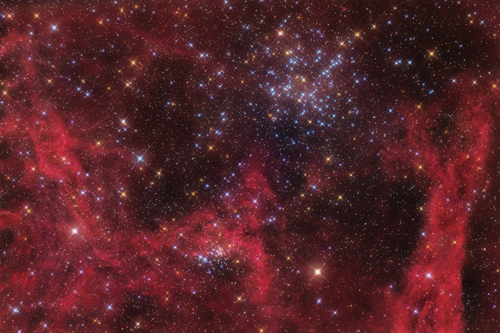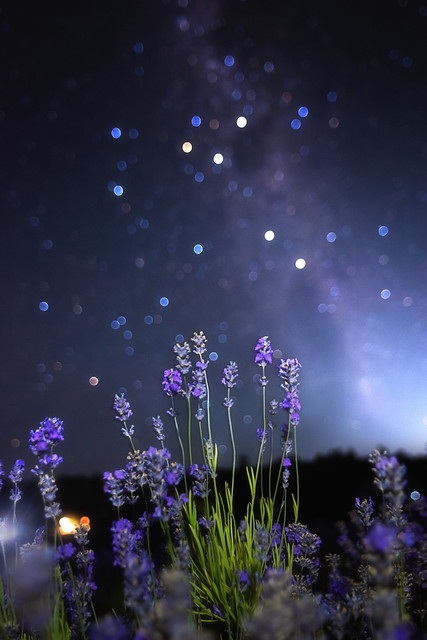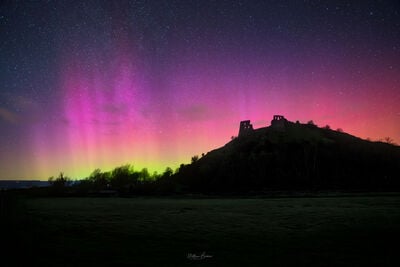 M31 - the kilohour project and the quest for Oiii
M31 - the kilohour project and the quest for Oiii by
William Ostling, on Flickr
After half a year of work, the Deep Sky Collective is happy to present its latest project - a kilo hour on M31. Not only does this image set new boundaries of what’s possible with collaborative imaging, its release also marks the DSC’s anniversary project! Being launched the 13rd February last year, we never thought we could achieve what we did so far - huge thanks to everyone involved in the DSC and for keeping on believing in what we do.
Behind the scenes we’re working on in-depth tutorials for everyone to access - our hope is that other ambitious photographers out there can make use of these tutorials and get started in collaborative imaging themselves - helping us get started in a new era of collaborative imaging. Expect the first tutorials to be released in 1-2 months.
The Andromeda galaxy, also known as Messier 31, is a galaxy in the constellation Andromeda. It lies at a distance of roughly 2.5 million lightyears, making it the closest (non-satellite) galaxy to our Milky Way. M31 is a big galaxy, spanning some 200.000 ly in diameter whereas our own galaxy “only” spans some 100.000 ly in diameter. Furthermore, M31 is heading towards us at 400.000 km/h which will result in a collision that is predicted to happen in 4.5 billion years - after this collision the two galaxies will merge, forming an even bigger one, set to be named Milkdromeda.
M31 is one of the most popular targets for amateur astrophotographers, as it’s very big in the night sky and very bright, even being visible to the naked eye when observing from dark skies.
In addition to being a fun target for new astrophotographers to go after, M31 also has proven to be worth pursuing for more advanced photographers. This is due to the faint features such as the Halo surrounding M31, the dim Ha background, or the Oiii outbursts, pillar and arc just southeast of the galaxy which was only discovered in 2022 by Drechsler, M. ,Strottner , X. and Sainty Y.
This variety of interesting features made M31 the perfect target for the next Deep Sky Collective project. Having started this target in August, it also marks the longest project we ever had up until now. For this colossal effort, 22 people worked together- 1 Editor, 3 co-editors, 17 photographers and myself, coordinating the project.
Note that the final version is a blend of Uri's and Steeve's edit.
In our final image of M31 you see here, all of these amazing attributes of M31 can be found - a staggering 488h of Oiii integration was gathered to go as deep as no one managed before. For the Ha emissions in the background, a total of 314h of Ha integration were gathered to provide the deepest look yet. Besides the now traditional H-alpha and Oxygen III for M31, we also decided to do something unusual and get Sii - In the end we ended up with a total of 169h. The goal behind this was to 1) photograph the extragalactic nebulae in M31 in SHO and 2) check for any Sii in the arc - for our findings, refer to interesting features in our image.
Finally, by Mid January, and after rejecting bad frames we ended up with a record breaking 1056h (or 1 ½ month) of integration over the LRGBHaOiiiSii channels, which marks the longest integration time ever on a single panel for any astrophoto. While the results might diminish at these crazy integration times, the effort more than paid off.
Before we jump into the details of the picture, a big thank you to everyone who played a part in this project. This endeavour is a manifesto to the incredible possibilities that collaborative imaging brings to the amateur community. Working together with all of you has been a real pleasure!
Credits:
Tim Schaeffer, Carl Björk, William Ostling, Uri Darom, Steeve Body
Sébastian Brizé, Kanwar Brar, Jasper Capel, Oliver Carter, Sendhil Chinnasamy, Jake Gentillon, Antoine and Dalia Grelin, Stephen Guberski, Charlie Hagen, Richard Hall, Florent Herrbach, Jason Jacks, Tarun Kottary, Brian Meyers, Justin P., Kevin Trillsam, Jens Unger
Special thanks to:
Carl, who put in a tremendous effort - not only did he stack a staggering 5600+ files, but he also developed a whole new stacking workflow with starting help from Charlie, which vastly improves the image quality and allows for automation. Huge thanks for his immense commitment to the project - none of this would be possible without him! Eager to help the community get started with collaborative imaging, he also released the DeepSkyCollective processing suite on PixInsight, containing the newly developed tools that were used for this project. I strongly recommend checking it out on <a href="
https://elveteek.ch/pixinsight" rel="noreferrer nofollow">elveteek.ch/pixinsight</a>
William, Uri and Steeve, for their impressive edits. A lot of time and skill goes into these edits, so big thanks! By having multiple edits we could cross check that all details are real.
Big thank you to Charlie who came up with the new stacking workflow which was later adapted by Carl.
Sendhil and Tarun, who gave us their excellent Bortle 1/3 data that was kept available for MSGR
Justin, who provided us with close-up data of the core. As our big stack's core was fried his data was used to blend in and fix the core which was a huge improvement
https://deepskycollective.com/home





















